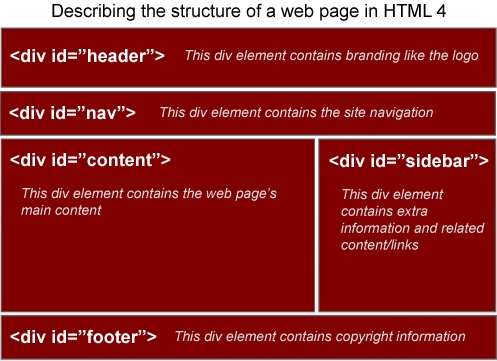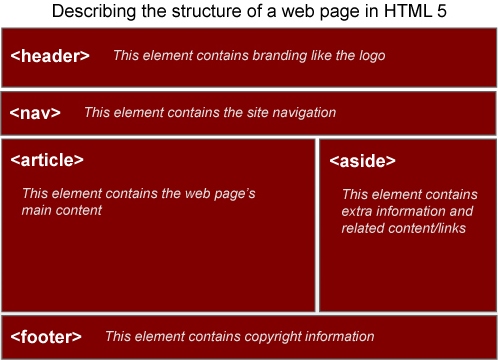- Latest and last HTML - 4.01 HTML 5
- HTML 5 is the major revision of the HyperText Markup Language
- HTML's development stopped at HTML 4.01 in 1999, and since then web content has evolved so much that current HTML specifications are inadequate for today's requirements.
- New HTML elements that improve our ability to describe content
- <header><nav><article><footer>
- The <canvas> element allows image scripting on the fly Example
- Div tags (html 4)
- <div style="width:500px">Stuff</div

- <div style="width:500px">Stuff</div
- HTML5 layout
<header></header>
<nav></nav>
<article></article><aside></aside>
<footer></footer>

- Web content has evolved so much that current HTML specifications are inadequate for today's requirements. HTML 5 aims to improve HTML's interoperability and address the growing demand for more diverse and complex web content. It also addresses HTML 4's lacking features for web applications.
- HTML's primary task is to describe the structure of a web page. For example, by enclosing text between <p></p> elements, HTML tells the browser that the text between those elements is a paragraph. Increasingly, diverse web content has outgrown HTML 4's ability to accurately describe the content of a web page.
- By adding more HTML elements, HTML 5 aims to give developers a better and more precise way of describing data.